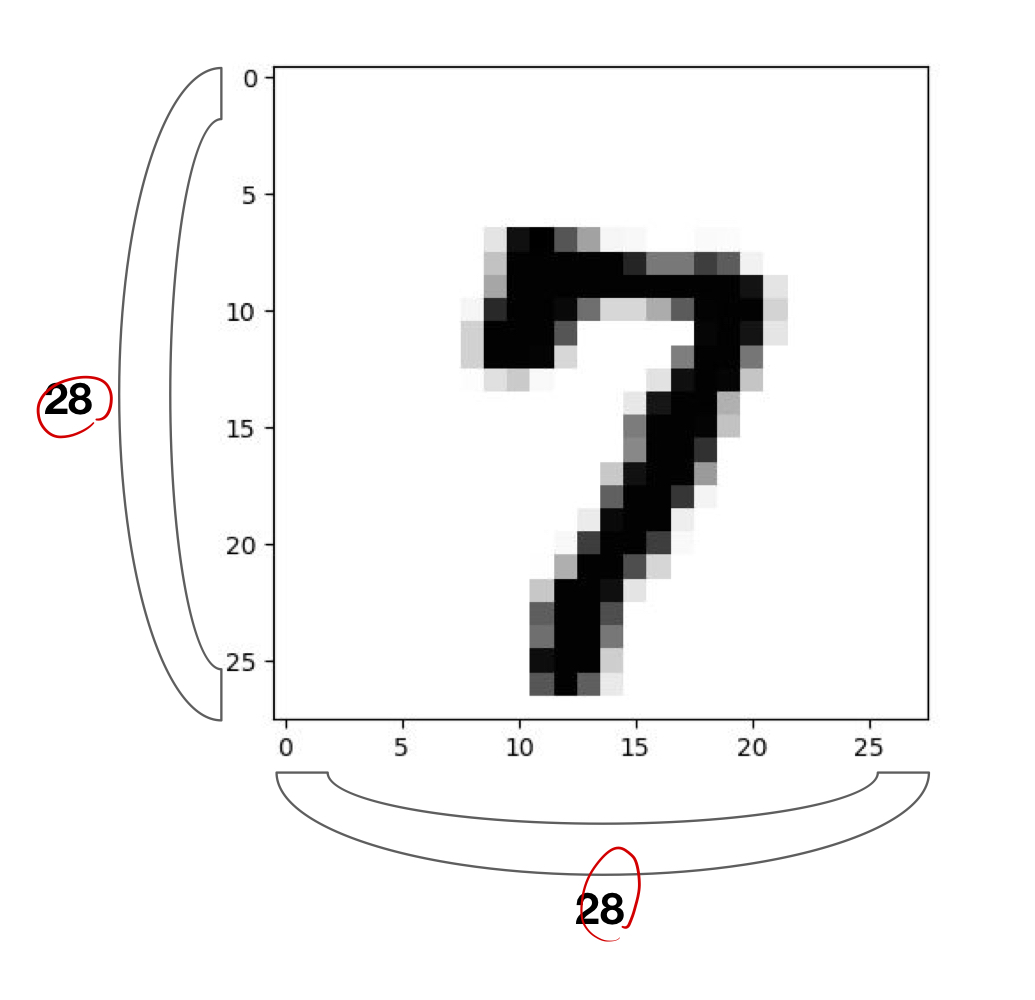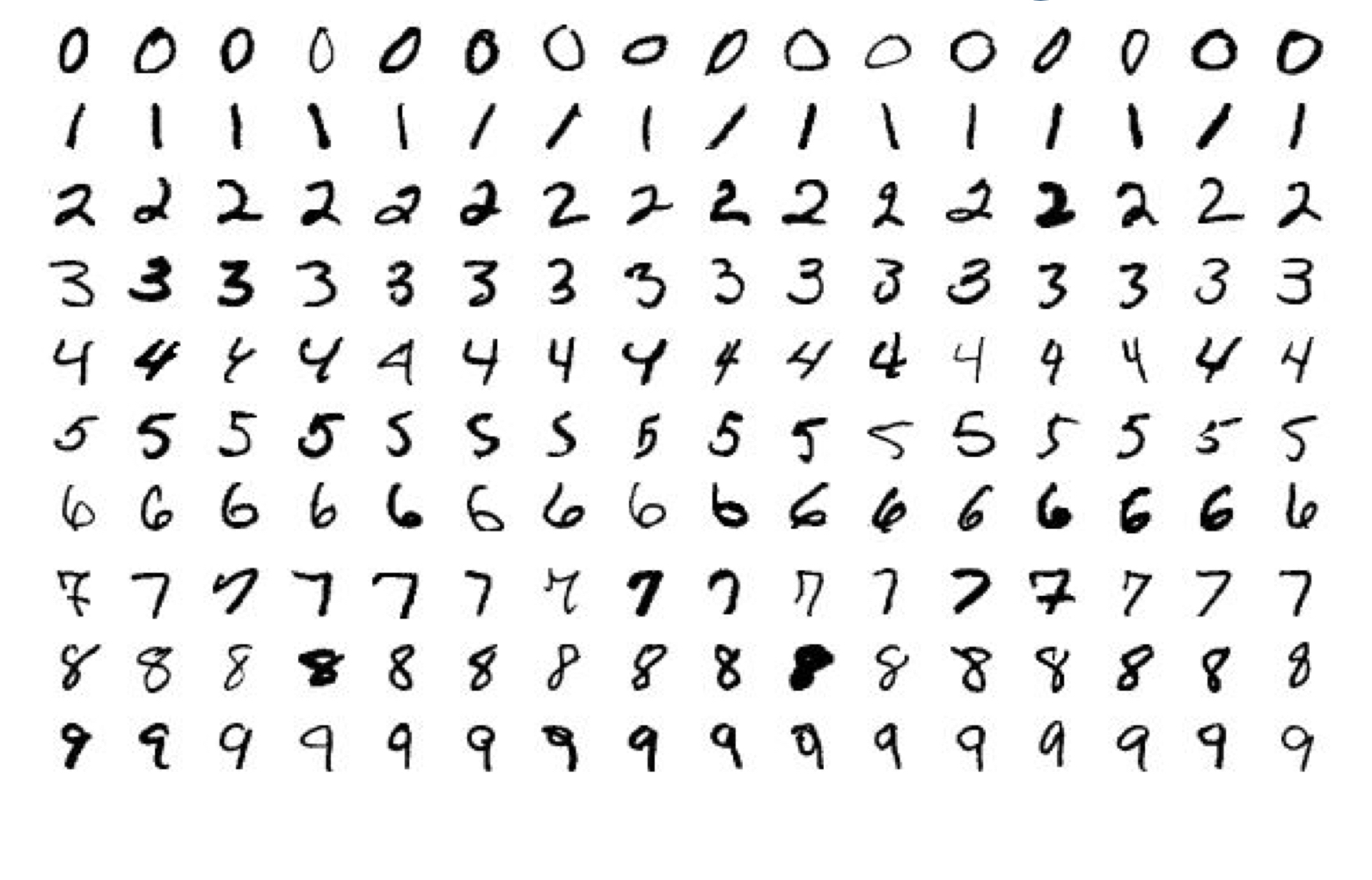Mnist Dataset
Mnist Dataset : Handwriteen digits dataset을 의미하고, 0~9까지 숫자 데이터가 입력되어 있다. 우편번호를 인식하고 싶어서 만들어진 데이터 셋이다.
- 데이터 형태 :
- 28 * 28 이미지로 되어있으며2.
- 1개의 channel의 gray image
- 0~9까지의 숫자로 이루어있다.

- torchvision : torchvision이라는 패키지를 통해서 여러 라이브러리 및 데이터 셋을 제공한다.
torchvision.dataset: Mnist를 비롯한 여러 데이터 셋을 제공.torchvision.model: 모델링 아키텍셔 제공torchvision.transforms: 트랜스폼 아키텍쳐 제공torchvision.utils: 읽어 올 수 있도록 하는 함수
- Epoch: Train데이터의 반복 횟수
- Batch Size: Train Data의 추출 된 부분으로, 이 단위로 데이터를 학습시킴.
- Iteration : 에폭 동안 반복하는 Batch데이터 셋의 횟수
- 코드
# Lab 7 Learning rate and Evaluation
import torch
import torchvision.datasets as dsets
import torchvision.transforms as transforms
import matplotlib.pyplot as plt
import random
device = 'cuda' if torch.cuda.is_available() else 'cpu'
# for reproducibility
random.seed(777)
torch.manual_seed(777)
if device == 'cuda':
torch.cuda.manual_seed_all(777)
# parameters
training_epochs = 15
batch_size = 100
# MNIST dataset
mnist_train = dsets.MNIST(root='MNIST_data/',
train=True,
transform=transforms.ToTensor(),
download=True)
mnist_test = dsets.MNIST(root='MNIST_data/',
train=False,
transform=transforms.ToTensor(),
download=True)
# dataset loader
data_loader = torch.utils.data.DataLoader(dataset=mnist_train,
batch_size=batch_size,
shuffle=True,
drop_last=True)
# MNIST data image of shape 28 * 28 = 784
linear = torch.nn.Linear(784, 10, bias=True).to(device)
# define cost/loss & optimizer
criterion = torch.nn.CrossEntropyLoss().to(device) # Softmax is internally computed.
optimizer = torch.optim.SGD(linear.parameters(), lr=0.1)
for epoch in range(training_epochs):
avg_cost = 0
total_batch = len(data_loader)
for X, Y in data_loader:
# reshape input image into [batch_size by 784]
# label is not one-hot encoded
X = X.view(-1, 28 * 28).to(device)
Y = Y.to(device)
optimizer.zero_grad()
hypothesis = linear(X)
cost = criterion(hypothesis, Y)
cost.backward()
optimizer.step()
avg_cost += cost / total_batch
print('Epoch:', '%04d' % (epoch + 1), 'cost =', '{:.9f}'.format(avg_cost))
print('Learning finished')
# Test the model using test sets
with torch.no_grad():
X_test = mnist_test.test_data.view(-1, 28 * 28).float().to(device)
Y_test = mnist_test.test_labels.to(device)
prediction = linear(X_test)
correct_prediction = torch.argmax(prediction, 1) == Y_test
accuracy = correct_prediction.float().mean()
print('Accuracy:', accuracy.item())
# Get one and predict
r = random.randint(0, len(mnist_test) - 1)
X_single_data = mnist_test.test_data[r:r + 1].view(-1, 28 * 28).float().to(device)
Y_single_data = mnist_test.test_labels[r:r + 1].to(device)
print('Label: ', Y_single_data.item())
single_prediction = linear(X_single_data)
print('Prediction: ', torch.argmax(single_prediction, 1).item())
plt.imshow(mnist_test.test_data[r:r + 1].view(28, 28), cmap='Greys', interpolation='nearest')
plt.show()
